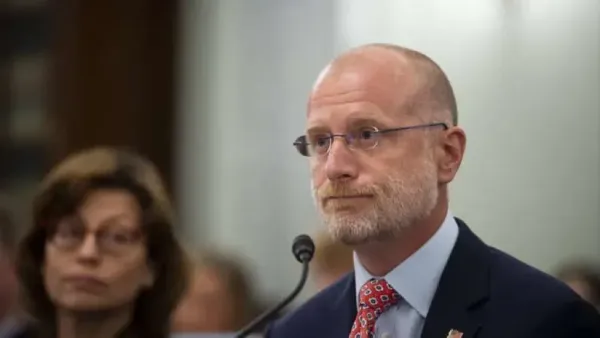Definition of Innovative Programs at Issue at NTIA Roundtable
WASHINGTON, March 17, 2009 – Broadband adoption is widely viewed as spurring innovation, but $7.2 billion had stakeholders gathered at Monday’s public meeting on broadband funding to offer comments on what sort of “innovative programs” could make best use of the funding.
Andrew Feinberg
News | NTIA-RUS Forum | Day 1, Session 3
WASHINGTON, March 17, 2009 – Broadband adoption is widely viewed as spurring innovation, but $7.2 billion had stakeholders gathered at Monday’s public meeting on broadband funding to offer comments on what sort of “innovative programs” could make best use of the funding.
American Telemedicine Association CEO Jonathan Linkous said his organization was pleased that the Commerce Department’s National Telecommunications and Information Administration and the Agriculture Department’s Rural Utilities Service were “taking the lead” on an issue he said had previously been spread between about a dozen federal agencies.
Telemedicine, which Linkous said could be “very broadly defined,” has potential to expand broadband services not just among health care facilities, but to homes of unserved and underserved populations as well. With the fiscal stimulus legislation providing money not just for broadband, but specifically for telemedicine, Linkous predicted a boon for his industry.
Telemedicine is traditionally associated with applications like remote links between rural clinics and major medical centers. But Linkous suggested that broadband should be brought to the home to enable better in-home care as a growing elderly population “ages-in-place.” That will require assistance that overwhelms current nursing facility capacity. “I suspect… you will see an even broader variety [of applications] than you have ever seen before.”
But those applications must coordinate with existing programs at the Health and Human Services Department and other agencies in order to be built into deployments, and not simply be “taped on,” he said. It’s important to not duplicate services or approve projects that “work against each other,” he urged, but to “bring all of them together.”
While Linkous argued for a diversity of connection endpoints for the network, American Library Association Executive Director Emily Shekatoff urged greater investment in public capacity at libaries, which she called “the premier public computer centers in America’s communities.”
Libaries are the sole source of free access in 73 percent of America, she said. And as librarians are among the most “highly trusted” groups in America, Shekatoff said they could effectively implement training programs.
Even with the access provided by the FCC’s e-Rate program, libraries still have too little bandwidth – despite needing far more than an average residence, she said. Of libraries, 60 percent report that their connections are too slow. Shekatoff said the lack of bandwidth deprives patrons of the “information hubs in [their] communities.”
The advantages of broadband to libraries only multiply with well-connected community colleges, said Jim Hermes, senior legislative analyst at the American Association for Community Colleges.
AACC agrees with most of ALA’s positions, he said. But community colleges are as much of a “crucial institution” as libraries, since they provide a link “back into the educational fold” for people during economic downturns. Also, distance learning programs for rural areas can create a “multiplier effect,” he said, as more people can take part and acquire new skills, allowing for entrepreneurship.
But OneEconomy Corporation CEO Rey Ramsey was skeptical of these claims. “It’s important to be intentional about what we’re trying to achieve,” he said. If America wants every citizen to have access to broadband, Ramsey offered a simple solution: bring it into their homes.
Americans in low income, “underserved” areas will readily adopt broadband if a deployment program focuses on “Access, Awareness and Affordability.” If Americans can access relevant content, are aware of the advantages of broadband and the services available to them, and they can afford access devices as well as service, Ramsey said there would be no question adoption would increase.
Ramsey took issue with the focus on schools and libraries. Many Americans work jobs and can’t make it to a library before closing time, he said. If the point of the stimulus program and programs like it are to get connectivity “to those who need it most,” the best way to “move the meter” on adoption is home deployment. “There’s no place like home in terms of making those connections,” he said.
When asked about the definition of an innovative program, Sheketoff cited distance learning applications, which she called “tremendous bandwidth suckers.” Schools and libraries need more bandwidth to handle the capacity, she said. “As a society, we need to make these resources available to everyone – no matter where you live or how wealthy you are.”
But Ramsey, who took care not to attack libraries in general, took issue with Sheketoff’s comments. “All studies show ‘moving the meter’ with adoption occurs at home,” he said. The two are not mutually exclusive, he conceded. But “we don’t want to create second-tier citizens [who only have access at libraries],” he cautioned. “Kids who have access at school need it at home.”










Member discussion